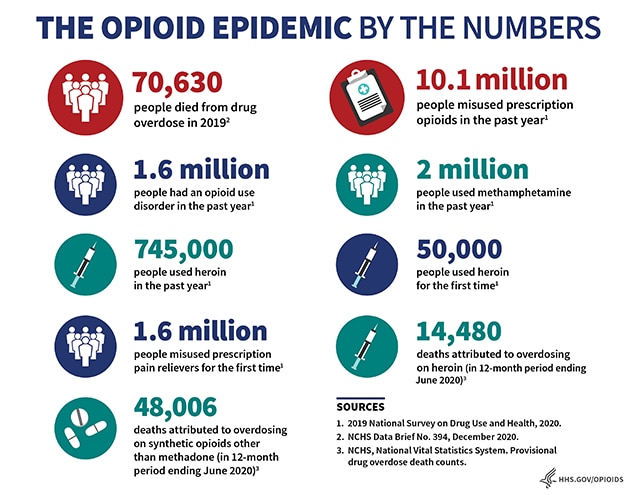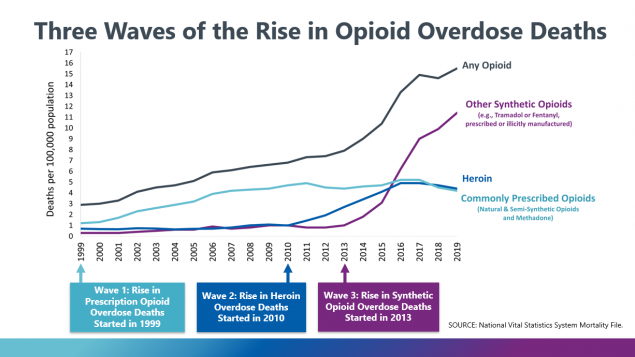The Opioid Crisis: A Corruption Epidemic
Why is There an Opioid Crisis?
This modern-day endemic has been closely linked to the increase in opioid use and liberal prescribing practices by several practitioners. During the 1980s, attitudes towards pain management began to shift. Previously, opioids were used primarily for the treatment of severe or chronic pain associated with cancer, palliative (end-of-life) care , and a limited series of acute pain. Additionally, In the mid-’90s, vigorous lobbying by organizations such as the American Pain Society championed the importance of addressing pain as a public health priority in the United States. These lobbying efforts were successful, resulting in pain being designated as the fifth vital sign the industry lobbied Congress and changed the Medicare ratings and payments to hospitals based on patient satisfaction with pain management. A new measure – “Pain as a 5th vital sign” was designated by the Joint Commission for accrediting hospitals, which created a significant financial incentive for hospitals to pressure physicians to prescribe more opioids.
However, various patient advocacy groups and pain specialists raised their concerns regarding the inadequate use of opioids. Articles were published expressing the need for opioid use for pain management, claiming that opioid addiction was only an irrational fear or concern held by practitioners at the time. This was echoed by the American Pain Society, of which the President stated “Therapeutic use of opioids rarely results in addiction.”⁵
Compounded by this information, a modified-release preparation of Oxycodone was approved by the Food and Drug Administration (FDA) and marketed as a safe opioid for the management of pain. It was argued that the slow release of opioids combatted the risk of addiction in comparison to immediate-release preparations.
Attitudes in the medical community began to change. Monitoring and treating patients’ pain became a regular practice, leading to an influx of opioid prescriptions. It was not until 2001 that the FDA asked for the claim to be removed. A steady decline in the prescription of opioids in the USA began after 2012, with the lowest rates of opioid prescription being seen in 2020 at 43.3 prescriptions per 100 people.⁶ Nonetheless, due to the upsurges in heroin and illicitly manufactured fentanyl, there is still an uprise in opioid overdose deaths.
Drug overdose is the leading cause of accidental death in the United States. On average, over 130 Americans die every day from an opioid overdose, over 70% of which are associated with prescription drugs including morphine, fentanyl, and codeine.
Drug overdose is the leading cause of accidental death in the United States. On average, over 130 Americans die every day from an opioid overdose, over 70% of which are associated with prescription drugs (morphine, fentanyl, codeine).¹
While most observers believe that the Opioid Crisis endemic is mostly a recent phenomenon,² we, at Modus, would argue that this is only the beginning of the most recent of three waves – a surge beginning in the 1980s that has revealed the underlying inequities in terms of who has been affected, how access to healthcare and treatments have changed to accommodate the needs and wants of people, and how pharmaceutical companies have aggressively marketed opioids.

What Is Addiction?
An addiction can be defined as an individual’s physical or psychological need to pursue any object, activity, substance, or action despite the consequences. Addiction can cause both physical and mental change, particularly in the brain’s “rewards center”, making it difficult to abruptly stop, regardless of the want to stop.³
Opioid Addiction
Opioid addiction occurs as a result of several practice and behavioral issues. Several practitioners in the United States possess an insatiable appetite for opioid prescription, as proven in 2015 during which 91.8 million individuals were prescribed or over-prescribed opioids⁴.
Opioid addiction is a chronic disease attributed to several physical, mental, and socioeconomic problems. Opioids are a class of drugs most often used to treat both chronic and acute pain. They function by depressing the activity of the nervous system, alleviating pain, and inducing sleep.
All of the above opioids work in the same way. They attach to the pain receptors on various nerve cells to minimize pain signals. When this happens, dopamine is released from the pleasure or rewards center of the brain, giving a sense of euphoria. Over time, the user begins to develop a desire for the continuous use of these opioids, partly due to the build-up of tolerance to the drugs, meaning that a higher dose is necessary to produce an adequate effect. This eventually leads to opioid dependence that is (more often than not) established or diagnosed once the damage has been done.
Individuals who become addicted may start prioritizing their access to opioids over other activities in their lives, negatively impacting their social and professional relationships. In severe cases, opioid addiction can be life-threatening.


